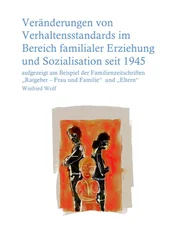Panthaleon, Aegidius, Cyriax, Christopher and
Erasmus and the truly beautiful
St. Vitus with the cockerel,
each look in different
directions without knowing
why. The three female saints
Barbara, Catherine and Margaret on
the other hand hide at the edge
of the left panel behind the back of
St. George putting together their
uniform oriental heads for a conspiracy against the men.
The misfortune of saints
is their sex, is the terrible
separation of the sexes which Grunewald
suffered in his own person. The exorcised
devil that Cyriax, not only because
of the narrow confines, holds raised
high as an emblem in
the air is a female being
and, as a grisaille of Grunewald’s
in the Frankfurt Stadel shows in
the most drastic of fashions, derives from
Diocletian’s epileptic daughter,
the misshapen princess Artemia whom
Cyriax, as beside him she kneels on
the ground, holds tightly leashed
with a maniple of his vestments
like a dog. Spreading out
above them is the branch work
of a fig tree with fruit, one of which
is entirely hollowed out by insects.
Little is known of the life of
Matthaeus Grunewald of Aschaffenburg.
The first account of the painter
in Joachim von Sandrart’s German Academy
of the year 1675 begins with the notice
that the author knows not one person living
who could provide a written or oral
testimony of that praiseworthy hand.
We may trust that report by Sandrart,
for a portrait in a Wurzburg museum
has preserved him, aged eighty-two,
wide awake and with eyes uncommonly clear.
Lightly in grey and black,
he writes, Matthaeus had painted the outer
wings of an altarpiece made by Durer
of Mary’s ascension in the
Preachers’ convent in Frankfurt and
thus had lived at around 1505.
Exceedingly strange was the trans-
figuration of Christ on Mount Tabor
limned by him in watercolours, especially
one cloud of wondrous beauty, wherein
above the Apostles convulsed
with awe, Moses and Elijah appear,
a marvel surpassed.
Then in the Mainz cathedral
there had been three altar panels
with facing fronts and reverse
sides painted, one of them
showing a blind hermit who, as he crosses
the frozen Rhine river with a boy
to guide him, is assaulted by two murderers
and beaten to death. Anno 1631 or ’32,
this panel in the wild war of that era
had been taken away and sent off to Sweden
but by shipwreck beside many other
such pieces of art had perished
in the depths of the sea.
At Isenheim, Sandrart had not been,
but had heard of the altar-work there,
which, he writes, was so fashioned that
real life could scarce have been other
and where, it was said, a St. Anthony with
demons meticulously drawn was to be seen.
Except for a St.John with hands clasped
of which he, Sandrart, when at one time in Rome
he was counterfeiting the pope, had caught sight,
with certainty this was all that was not lost
of the work of the Aschaffenburg
painter of whom, besides, he knew only
that most of the time he had
resided in Mainz, led a reclusive
melancholy life and been ill-married.
We know there is a long tradition
of persecuting the Jews, in the City
of Frankfurt as in other places.
Around 1240, the records tell us,
173 were either slaughtered
or died of their own free will
in a conflagration. In 1349
the Flagellant Brothers instituted
a great massacre in the Jewish quarter.
Again, the chronicles tell that the Jews
burned themselves and that
after the fire there was a clear view from
the Cathedral Hill over to Sachsenhausen.
Thereafter the Jews only hesitantly
returned to the city on the Main.
In the mid-fifteenth century
a clothing statute is issued,
yellow rings to be worn on the tunic,
later a grey circle the size of
an apple, for the prevention of all
carnal intercourse between Christians
and Jews, for a long time to come
under the pain of death.
Then, at the expense of Frankfurt’s
high city council, in the train
of civic reform, progressive order
and hygienisation, a ghetto of their own
is built for the Jews by the Wollgraben,
fourteen houses and a new synagogue.
By Grunewald’s time, we learn,
there are twenty-three houses, and soon
the district counts more than three thousand souls
without the boundaries having been widened.
Each night-on Sundays at four in the
afternoon-they were locked up, and
might not walk into any place
where a green tree grew,
not on the Scheidewall
nor in the Ross, nor on the Romerberg
or in the Avenue. In this ghetto
the Jewess Enchin had been raised
before, not many months preceding
her marriage to Mathys Grune
the painter, she was christened in the name of St. Anne.
In the compendious book about the historical
Grunewald which Dr. W. K. Zulch produced
in ancient Schwabach type,
in the year 1938 for Hitler’s birthday
the story of this extraordinary union
could not be admitted. Grunewald
would have noticed this child,
remarkable, it was said, for her beauty
when she passed through the Bridge Gate
and the Preachers’ Lane on her way
to her workplace just outside the ghetto.
But there is no evidence that it was he who induced
this Anna, betrothed to him a year later,
to change her religious faith.
Rather it seems that she herself
had facilitated this step
attesting great strength of will,
or desperation, by looking the painter
straight in the eyes; perhaps
at first merely in love with
his green-colored name,
a conjunction which to the bachelor
master, who meanwhile had given up
the Mainz Court Painter’s appointment
in favour of the great Isenheim Altar
commission, will not have come amiss,
for without a household of his own
he could employ no assistant
or apprentice for his work.
When Grunewald buys a house
very close to the cathedral
on December 17th 1512
for twenty-three guilders
twelve shillings, already,
the documents record, he has taken
to wife the baptised Anna.
The much admired young proselyte,
who for the Frankfurt Christian
community, which even for her baptism
had overwhelmed her with gifts,
was no mean acquisition, and
could have founded Grunewald’s fortune.
If it fell out otherwise, for one thing
it was because the painter
who later lived as a recluse
and almost underground, himself
made impossible his recognition
by this community; and,
for another, as his pictures prove,
he had more of an eye for men,
whose faces and entire physique
he executed with endless devotion
whereas his women for the most part
are veiled, so relieving him of the fear
of looking at them more closely.
Perhaps that is why Grunewald’s
Anna grew shrewish, ill, a victim
to perverse reason, to brain fevers
and to madness.
In the end, awaiting recovery,
she is placed in hospital where
at the time of the painter’s death
still she lives on, infirm
in body and mind.
In the Chicago Art Institute
hangs the self-portrait of an unknown
Читать дальше












